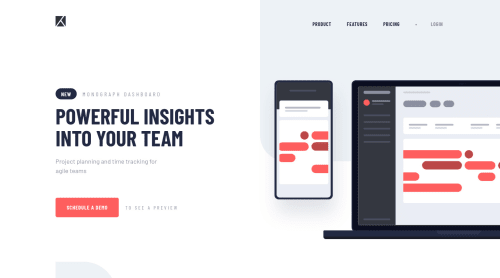Project Tracker Page - HTML and CSS only

Solution retrospective
Choosing to make this without JS was a challenge.
// With a pure CSS mobile navigation I used an anchor tag with an href of 'index.html' to enable the 'X' state. While it seems to work, I wonder if there is a way of doing this without reloading the index page and using the loaded page anchors?
// Used the :before pseudo element to create the rounded cropped box in back so as not to add unnecessary non-semantic elements to the DOM.
// It would be nice to get my React skills going for a future challenge. Wondering how should I begin this move toward a more componential skillset?
Please log in to post a comment
Log in with GitHubCommunity feedback
No feedback yet. Be the first to give feedback on James's solution.
Join our Discord community
Join thousands of Frontend Mentor community members taking the challenges, sharing resources, helping each other, and chatting about all things front-end!
Join our Discord